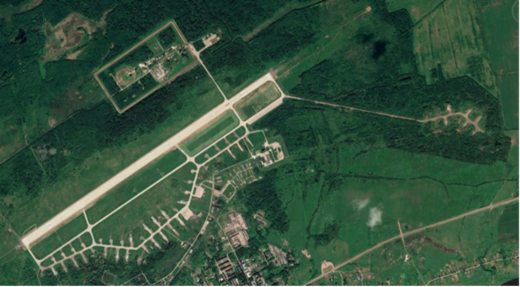 Russia has a wide range of nuclear-capable non-strategic delivery systems. This note focuses on air-delivered weapons and on ground-launched road-mobile missiles (whether ballistic or cruise missiles). The key principles of operations, however, remain the same across all nuclear delivery systems. They also appear to apply to weapons assigned to nominally strategic heavy bombers - Tu-95MS and Tu-160.
Russia has a wide range of nuclear-capable non-strategic delivery systems. This note focuses on air-delivered weapons and on ground-launched road-mobile missiles (whether ballistic or cruise missiles). The key principles of operations, however, remain the same across all nuclear delivery systems. They also appear to apply to weapons assigned to nominally strategic heavy bombers - Tu-95MS and Tu-160.
The description of nuclear weapon storage and deployment procedures is based primarily on the "Lock Them Up: Zero-Deployed Non-Strategic Nuclear Weapons in Europe" report (see an update in this post), the semi-official history of the 12th Main Directorate, Рожденные атомной эрой, and OKSNAR - Fully Assembled State - Soviet Nuclear Weapons in Hungary 1961-1991.
Russia has repeatedly stated that in peacetime all its non-strategic nuclear weapons are "concentrated at centralized storage bases." There are two kinds of facilities that fit that definition---twelve large national-level storage sites and about 35 base-level storage facilities (see the map here). Base-level facilities could contain weapons that are assigned to delivery systems at the base they are collocated with or at other bases in the region. For example, a storage facility known as Kolosovka can store nuclear weapons for all nuclear-capable delivery systems in the Kaliningrad region. Each base-level facility has a "parent" national-level storage site that stores nuclear weapons assigned to the respective base or region. The "parent" national-level storage facility can be separate from the base-level facility by a considerable distance. The Kolosovka site is located more than 1000 km away from its "parent," Vologda-20. In many cases, however, the distance between the sites is smaller.
All weapons that are not mated to their delivery systems are handled by the troops of the 12th Main Directorate of the Ministry of Defense (12 GUMO).
If nuclear weapons are stored at the base-level facility, the standard weapon deployment procedure appears to include several steps that depend on the specific delivery system and the weapon type. In Russia's practice, weapons are stored separately from their delivery vehicles.
The image above shows the arrangements at the Soltsy air base, a base of Tu-22M3 bombers (Image source: Google Earth). The rectangular security perimeter surrounding the nuclear weapon storage facility is seen in the upper left corner of the image. A storage facility on the right side of the image, which is used to store non-nuclear armaments, does not have a similar security perimeter around it.
If the weapons in question are warheads of ballistic or cruise missiles, each of them is stored in a specialized container, only to be mated with the missile as part of the deployment procedure. Gravity bombs are stored in their containers assembled.
Once the units receive an order to bring nuclear delivery systems to a higher state of readiness, the 12 GUMO units must take the weapons, still in containers, out of storage and load them on specialized trucks. When this procedure is completed, the trucks deliver the containers to a designated point, where weapons are removed from containers so they can be mated with their delivery systems.
In the case of air-delivered weapons, such as bombs or ALCMs, this point is normally a designated area of an airbase where the 12 GUMO troops carry out the final assembly of a weapon, if necessary, and prepare it for loading on the delivery aircraft. Fully assembled weapons at the airbase remain in the custody of the 12 GUMO troops until the very moment they are loaded on an aircraft that is ready to take off, at which point the custody is transferred to the aircraft crew.
Warheads of land-based ballistic and cruise missiles could probably be delivered to the missile base. However, the standard procedure appears to involve transporting the warheads to a designated rendezvous point away from the base where they would be mated with missiles and then loaded on launchers. The 12 GUMO troops apparently have the necessary equipment to conduct these operations in the field.
It appears that the 12 GUMO troops can keep nuclear weapons outside of the storage facility for some time, probably days and maybe even weeks. However, at some point the weapons must be returned to the base-level facility that provides conditions for long-term storage.

Post a comment